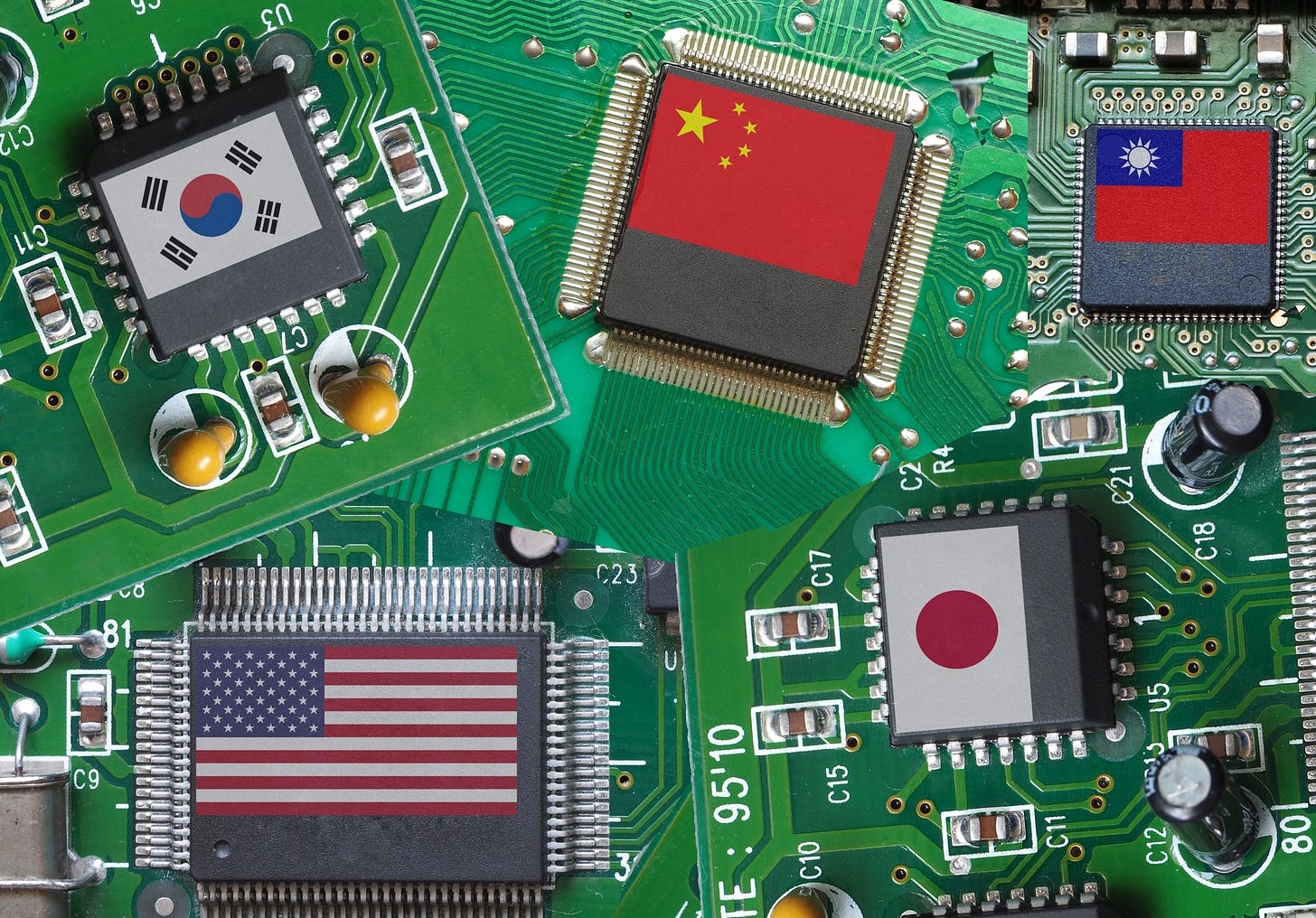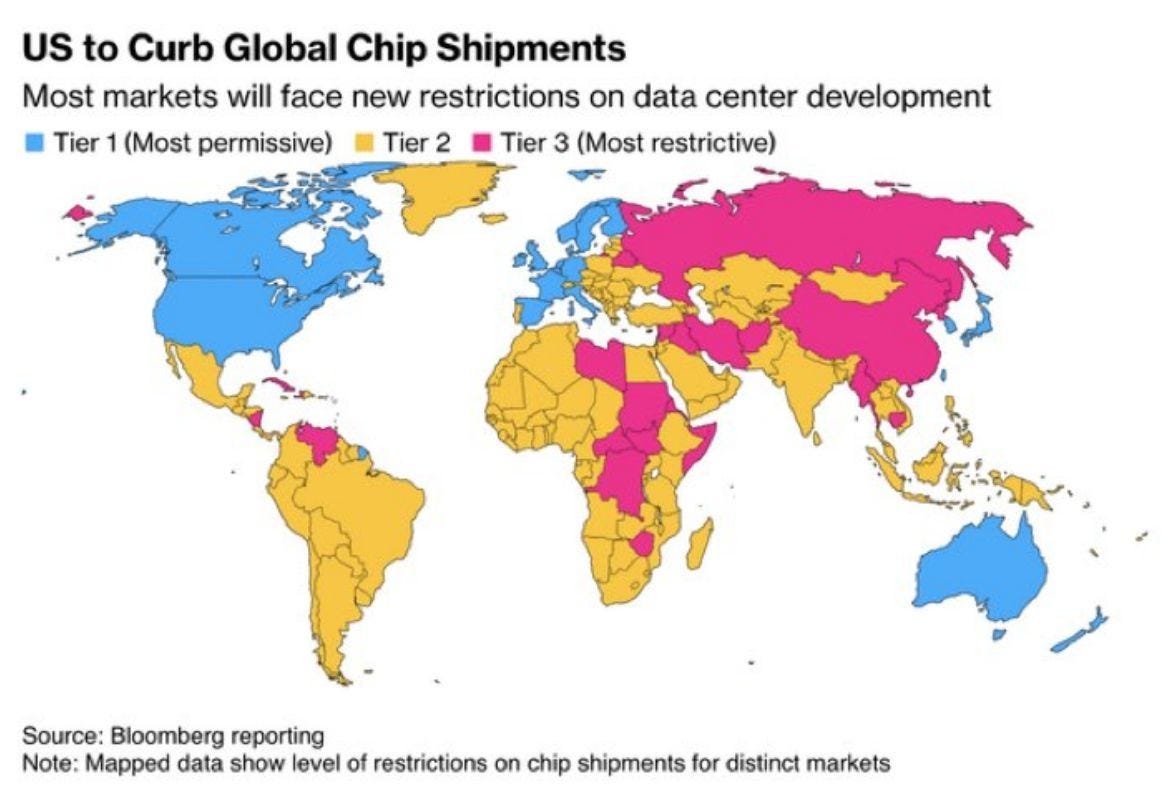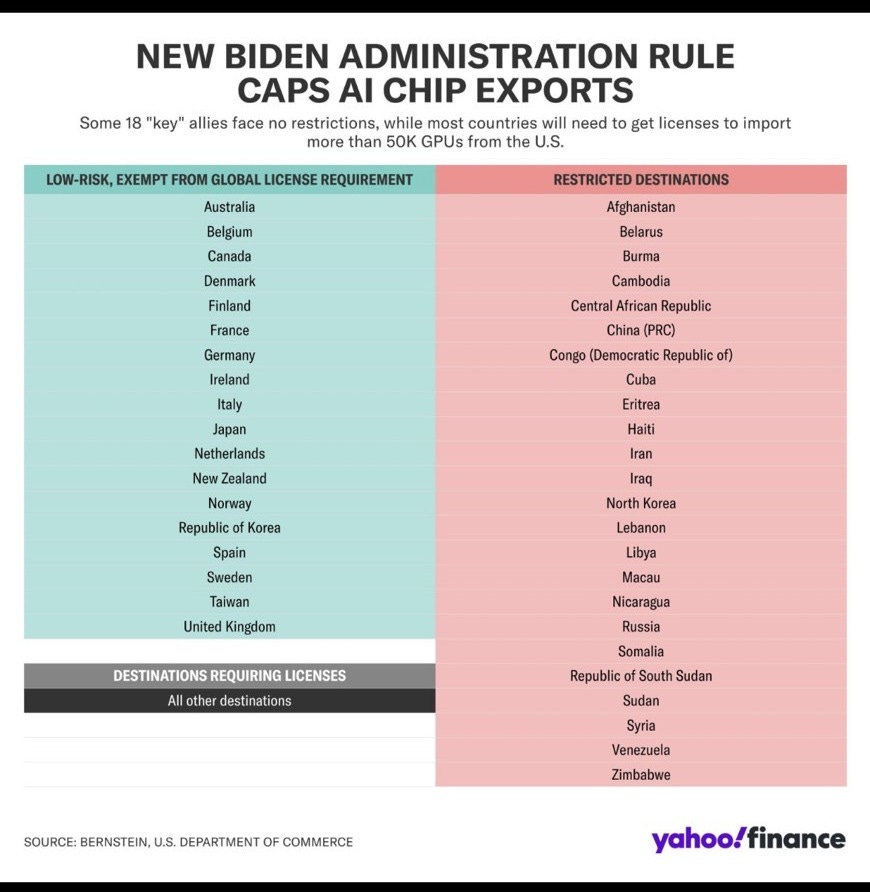US Expands AI Chip Export Controls, Will it Work to Slow China's Innovation?
The US Department of Commerce’s Bureau of Industry and Security (BIS) has announced a significant policy shift aimed at regulating the export of advanced computing chips and specific closed artificial intelligence (AI) model weights. These measures are part of a broader strategy to safeguard national security and strengthen the United States’ position as a leader in AI innovation. The new rules also include updates to the Data Center Validated End User (VEU) authorization, creating a more structured framework for exporting sensitive technologies. However, analysts are expressing their concerns.
Key Elements of the New Policy
Categorized Export Destinations: The new rules categorize destinations into three groups: allies and partners, adversaries, and other nations. Countries in the latter two categories face stricter controls, with mandatory export licenses for advanced AI technologies. Notably, the rules aim to curb the indirect flow of US-made AI chips to China through third countries, a practice that has previously been uncovered.
License Exceptions: Despite tightened regulations, the framework includes several license exceptions to balance security with economic interests:
Allied Nations: Export, reexport, or in-country transfers are permitted to trusted allies without additional authorizations.
Supply Chain Stability: Exceptions prevent disruptions in chip manufacturing and storage, excluding arms-embargoed nations.
Low-Volume Exports: Limited quantities of chips may flow globally, excluding adversaries.
VEU Program Enhancements: The Data Center Validated End User (VEU) program introduces two categories:
Universal VEUs (UVEU): Enables global data center construction with restrictions, requiring 75% of chips to remain in the US or allied nations.
National VEUs (NVEU): Allows country-specific data center operations outside arms-embargoed regions.
Balancing Security and Innovation
The policy is designed to block adversaries, particularly China, from accessing frontier AI technologies. However, experts warn of unintended consequences. Analysts point to cases like Singapore’s PowerAir, whose chips were found in Huawei processors, as evidence of the challenges in controlling indirect flows. These incidents prompted immediate action, such as Taiwan Semiconductor Manufacturing Company’s (TSMC) termination of relations with PowerAir.
While the rules aim to maintain a competitive edge for US companies, they may inadvertently spur innovation elsewhere. For instance, China’s DeepSeek has optimized less advanced Nvidia chips (H800), achieving performance comparable to state-of-the-art models from OpenAI and Meta. According to Semi Vision, a Taiwan-based research startup, this shift highlights a growing emphasis on efficiency over brute computational power. “DeepSeek’s success exemplifies a new balance between resource usage and performance,” says Semi Vision. “Such innovations could disrupt leading US players like Microsoft, Meta, Google, and Amazon.”
Strategic Goals of the Framework
The BIS’s framework reflects a multi-faceted approach to:
Preserve AI Leadership: Safeguard US dominance in AI development and deployment.
Mitigate Risks: Prevent misuse of advanced AI for malicious purposes, such as cyberattacks or weapons development.
Encourage Collaboration: Foster secure partnerships with allies and institutions for global technological advancement.
A Turning Point for AI Policy
The policy's enforcement remains uncertain under the incoming Trump administration, as it is set to take effect 120 days after publication. However, its implications are far-reaching, influencing not only US national security but also the global AI landscape.
As the marginal returns from scaling AI diminish, the competition is shifting towards innovative efficiency—a shift that may redefine global leadership in the AI race. Whether this framework accelerates or hampers US technological superiority is debatable, as some argues that it forces China to innovate with a different route.
In an era where AI shapes the future of economies and national security, the US faces a delicate balancing act. By prioritizing both innovation and security, the new export controls may pave the way for a more collaborative and responsible technological ecosystem—one that ensures AI benefits humanity while safeguarding against its misuse. The question remains: can the US and its allies outpace the rapid adaptations of competitors? Only time will tell.




